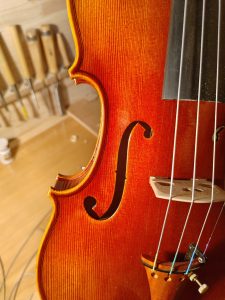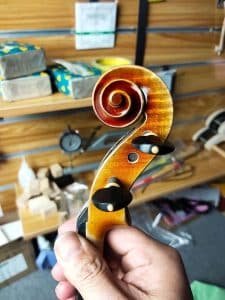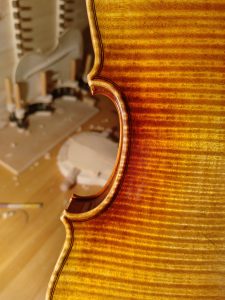The historical origin and current development of Chinese violin making
violin makingorigin
The history of violin making in China is related to the arrival of Western missionaries and merchants. Although there are disputes about the origin and introduction of violin-making culture, what is certain is that violins and Western music came to China with Western missionaries and traders. Although the violin had not yet been invented when early missionaries such as Marco Polo came to China, the influence of Western music gradually spread in China.
Welcome to buy a stringed instrument from Artisan Violins, you canClick on this linkConnect with us!
Seniorsattempt
The production history of Chinese violins is relatively late compared with European and American countries, with a history of nearly 100 years. Situ Mengyan was one of the first people in China to try making violins. He studied violin while studying in the United States and began to think about making violins on his own. Situ Mengyan's skills were recognized by Polish violin maker Walter Sharon Gauss, and he became one of the earliest violin makers in China. In addition, early violin maker Wang Mei also started trying to make violins in Qingdao.
Contribution of Tan Shuzhen, Shanghai Conservatory of Music
The real founder of China's violin making industry is Mr. Tan Shuzhen, Vice President of Shanghai Conservatory of Music. Professor Tan is a violinist and also passionate about violin making. He has read a lot about violin making and has a wealth of knowledge and experience. Tan Shuzhen opened a musical instrument research institute at the Shanghai Conservatory of Music in 1956, and started a violin making class in 1958, recruiting skilled craftsmen from across the country to learn how to make violins. Many of these students later became famous violin makers in China and trained technical backbones for the violin making industry across the country. He also recruited two batches of undergraduate students in 1978 and 1979, pioneering undergraduate education in violin making in China.
violin makingfamous person
There are many famous violin makers in China. Zhu Xiang, Ye Baorong, Xu Fu, Chen Jinnong, He Guangji, Dai Hongxiang, etc. are all very famous Chinese violin makers. They were students of Tan Shuzhen's class. Master Liang Guohui from Guangzhou is also one of the early violin makers, and he still insists on making violins today. Each of these luthiers has their own unique skills and styles.
Modern production techniques and materials
With the advancement of the scientific and technological era, modern violin making technology is increasingly used in violin making. Mechanical assembly line production and digital technology make the piano making process more efficient and precise. At the same time, different production materials are also being tried. The use of traditional wood and new materials will have different effects on the sound.
influence and competition
The level of Chinese violin production is gradually emerging on the international stage. More and more Chinese violin makers are participating in international violin making competitions and exhibitions, demonstrating the competitiveness of Chinese violin making. Foreign musicians' recognition of Chinese violins is also increasing.
Cultural inheritance and protection
The inheritance and protection of violin making skills are very important. Nowadays many people are trying to pass on this ancient craft. The government and society have also paid attention to and protected the culture of violin making to ensure the continuation of this skill.
Welcome to buy a stringed instrument from Artisan Violins, you canClick on this linkConnect with us!
Although the history of Chinese violin making is later than that of the West, it has made great progress thanks to the efforts of its predecessors. We are full of expectations for the inheritance and development of this ancient art, and hope that China's violin making industry will continue to thrive.




